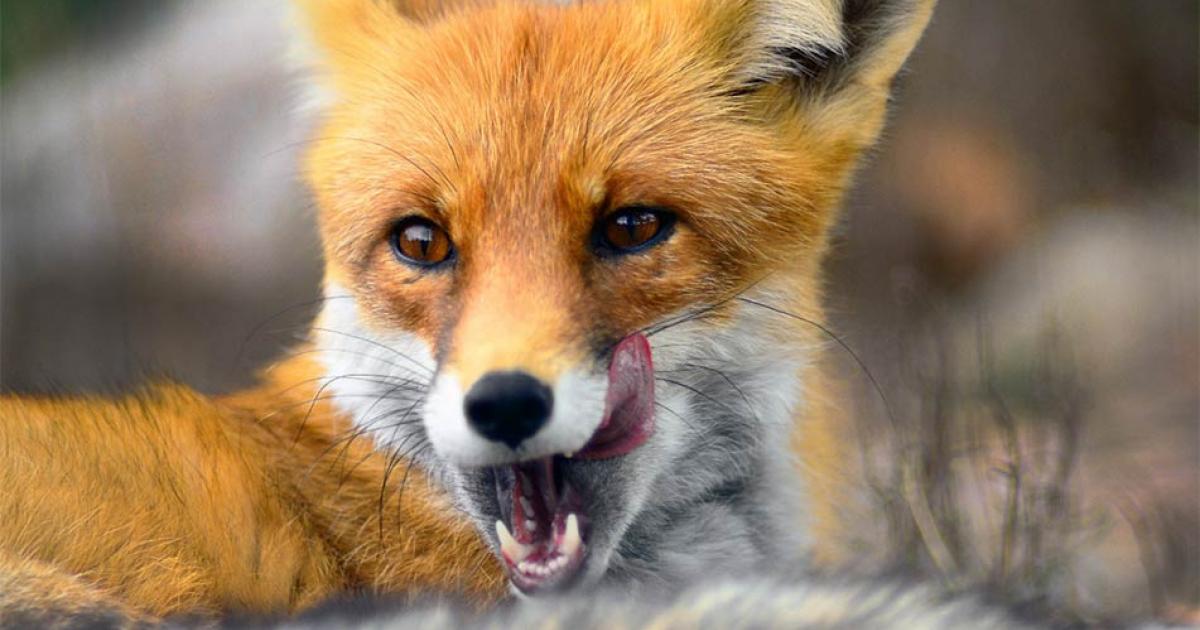
Ice Age Foxes Feasted On Our Reindeer Meat Leftovers
A study into the dietary habits of Ice Age foxes is showing German scientists the impact humans had on the ecosystem in that region 40,000 years ago. They believe that tracking what those small carnivores ate may provide a clearer picture on human activity during Paleolithic times and demonstrates the long relationship between humans and foxes.
The Ancient Commensal Relationship of Humans and Foxes
The scientists explain in their paper, which is published in the open-access journal PLOS ONE, that foxes and humans have what is known as a “commensal relationship.” That means that the foxes get food or other benefits from sharing environments with humans, but they do not hurt or provide a specific benefit for humans.
Chris Baumann of the University of Tübingen, Germany, and colleagues believe that this relationship is ancient. So, they decided to examine if the story of Ice Age foxes’ dietary habits can provide more information on what humans were up to at that time and the impact our ancestors had on the environment in which they lived.

Summary figure for the commensal fox hypothesis. The blue area marks the impact of humans on dietary resources. For low δ15N foxes, humans had no influence, while for intermediate δ15N foxes they had a very strong influence (restricted diet). High δ15N foxes may be influenced (e.g. by scavenging at kill sites) or may be of natural origin (e.g. by scavenging from megafauna that died naturally). (Baumann et al, 2020, PLOS ONE/ CC BY 4.0)
PLOS reports that the authors analyzed ‘Carbon and Nitrogen isotopes of various herbivores, large carnivores, and red and Arctic foxes’ which they took from Middle and Upper Palaeolithic archaeological sites located in the Swabian Jura (southwest Germany). They wanted to see how things changed over time, so they looked at samples from the Middle Palaeolithic (older than 42,000 years ago), when Neanderthals were sparsely inhabiting the area, and compared those findings to the early Upper Palaeolithic periods – the Aurignacian and Gravettian (42,000 to 30,000 years ago) – which is when Homo sapiens became the prominent hominids there.
What Did Ice Age Foxes Eat?
When Neanderthals were living in the area, foxes were shown to have had a similar diet to large carnivores. But once Homo sapiens became more common, the foxes changed their diets and they began to primarily consume reindeer. The researchers suggest that the foxes that were originally hunting small rodents or scavenging the scraps left by larger carnivores began to eat the reindeer leftovers discarded by humans.

Ice age foxes ate reindeer leftovers. (Public Domain)
According to the study, this means that the introduction of humans on the scene altered the local ecosystem and led to 42,000 years of foxes relying on humans for food. Baumann says that “Dietary reconstructions of ice-age foxes have shown that early modern humans had an influence on the local ecosystem as early as 40,000 years ago. The more humans populated a particular region, the more the foxes adapted to them.”
What Else Can Ice Age Foxes Tell Us?
The researchers write that “fox remains are often found in archaeological sites of the Late Pleistocene all over Europe,” so this study may be relevant to areas outside Germany as well. Even more than that, the researchers suggest that “foxes can be used as an indicator of past human impact on ecosystems, as a reflection of population densities and consequently to track back the influence of humans on the Pleistocene environment.”
- Quick as a Fox, Powerful as a Demon: Legendary Foxes and Their Trickster/Temptress Ways
- Beware the Kitsune, The Shapeshifting Fox of Japanese Folklore
- Dogs and Foxes Were Domesticated By Bronze Age Humans

“Foxes can be used as an indicator of past human impact on ecosystems.” (Public Domain)
There is a long debate about how much the introduction of humans into an area impacted the local herbivorous megafauna, but there have been less studies examining how Homo sapiens left their mark on Late Pleistocene carnivores. In this study, the researchers suggest that humans may have been beneficial to their new homes as well:
“Some large carnivorous species may also have been impacted by hominin activities, leading to their extinction, through competition or extirpation. However, one aspect that has been rarely addressed is the possibility that human hunting may have had a positive effect on some opportunistic species, through the subsidies that humans produced and that could have been exploited by some species. Especially small predators such as foxes could be one of these cases, considering the ability that both Arctic and red foxes ( Vulpes lagopus and Vulpes vulpes) have to exploit the leftovers of other predators, including humans.”
Overall, this kind of study may help researchers to find out more about prehistoric human population density, the impact it has on the environment, and how studying small opportunistic predators could make a difference in understanding those two areas of interest.
Top Image: The arrival of humans helped Ice Age foxes. Source: DragoNika / Adobe Stock















